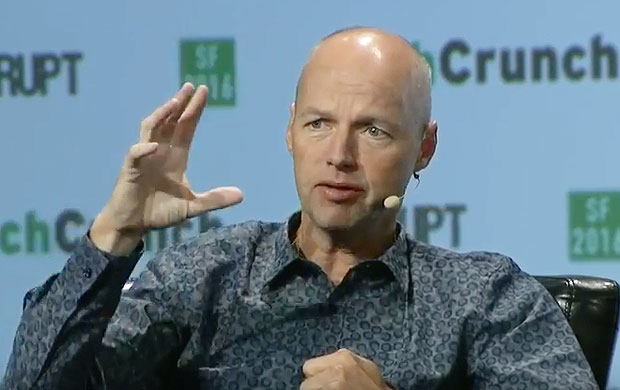Online education companyUdacity on Tuesday introduced a new “nanodegree” program in self-driving auto engineering. President Sebastian Thrun made the announcement during an interview at TechCrunch Disrupt.
The goal is to build a crowdsourced, open source self-driving car, he said.
The program is the first of its kind, according to Thrun.
Students will learn the skills and techniques used by self-driving car teams at the most innovative companies in the world, Udacity has promised. The course spans three 12-week terms and covers deep learning, computer vision, sensor fusion, localization and controllers.
Each of the three terms will cost US$800. The first term begins in mid-October.
Registration is now open for the 250 seats available. More than 1,200 applicants have applied so far, according to Udacity spokesperson Jeanne Hornung.
Students are expected to have prior experience in Python or another scripting language and at least some background in probability, statistics and calculus. Scholarships are available for qualified applicants.
Thrun will teach the courses, along with David Silver, who was an autonomous vehicle engineer at Ford before joining Udacity, and Ryan Keenan, who previously worked as a freelance data analyst.
Thrun is a pioneer in the development of the self-driving car. While at Stanford, he led the team that built the autonomous car Stanley, which won the 2005 DARPA Grand Challenge. He also was a leader at Google X.
Shining Opportunity
Udacity has partnered with Mercedes-Benz, Nvidia, Otto, Didi Chuxing, and other companies in the autonomous vehicle field to ensure that graduates of the program will be successful.
Each partner company will handle a different curriculum aspect. Mercedes Benz will help with software. Otto will help design projects for students. Nvidia will guide the overall trajectory of the curriculum, as well as provide scholarships for qualifying students.
Students will get an opportunity to work with the self-driving car Udacity owns. At the end of the 36-week online education program, they will test their code remotely to see if it works in the real-world, spokesperson Hornung told LinuxInsider.
“For only $2,400 a bright, eager technology student can be immersed in a year-long online training [program] on autonomous car science created by arguably one the world’s top experts and most enthusiastic teachers in the field,” said Kevin Cook, senior stock strategist at Zacks Investment Research.
This is a fantastic opportunity for technically capable students who want a chance to learn the tricks of an exploding new tech trade from the best teachers, he told LinuxInsider.
The growing popularity of programs focusing on open source technology is significant, observed Dan Cauchy, executive director of Automotive Grade Linux.
“When companies and individuals collaborate on shared technologies, everyone benefits. In the automotive industry, we are seeing how open source can really transform the development process and improve the time-to-market for new products, he told LinuxInsider.
Having more engineers trained in the underlying technologies will help push projects forward and give back to the open source community, he said.
Rough Road Ahead?
The Udacity experiment may have a downside, warned Zacks’ Cook. Udacity may be viewed as a threat to multibillion-dollar autonomous vehicle endeavors. It also may pose a threat to the university system by offering an extremely affordable and practical education.
“This is par for the course, so to speak, for Sebastian Thrun, who broke ground when he offered a free AI course at Stanford that became incredibly popular,” Cook said.
Another downside might be limited functionality, suggested Mark Warner, lead analyst at Seo4anyone.com.
“Nobody is pointing out that they can not drive in the snow,” he told LinuxInsider, but “neither can unlicensed drivers with no experience behind the wheel. Most licensed drivers at present time can barely handle that.”
Progress in developing an autonomous car may be burdened with software and legal challenges, suggested automotive product liability attorney Jason Turchin.
“I have been studying the legal implications and potential legislation of self-driving vehicles,” he told LinuxInsider.
One criticism of self-driving vehicles is the danger of others hacking them. While open source may be beneficial in certain circumstances, there is a risk of encrypting software with malware or viruses that can be controlled by the developer, Turchin explained.
“Imagine a vehicle driving at 70 MPH with a devious coder who decides to shut the car down, disabling the brakes, steering and other safety components,” he said.
Legal implications lurk in many states that have strict liability laws. They could hold companies liable for injury or death caused by self-driving vehicles.
“Crowdsourced coding and development could create potential liability for all involved in the development of the software or vehicle,” Turchin said.
Investment Windfall
The market for autonomous cars will hit $42 billion in 2025, according to a Boston Consulting Group report, which found that consumer demand is very high.
Some 55 percent of U.S. drivers are likely to consider buying a partially autonomous vehicle. Another 44 percent of drivers would buy a fully autonomous one, the report notes.
Money seems to be no object. As many as 24 percent of consumers would pay an extra $4,000-plus, based on the report, for autonomous driving features. That suggests high interest in self-driving on a highway, self-driving in traffic, self-driving along a single route, and autonomous valet parking.
Why buy an autonomous car? The main reasons, according to BDG, are lower insurance premiums and fuel costs. Improved safety factors in as well.






















































